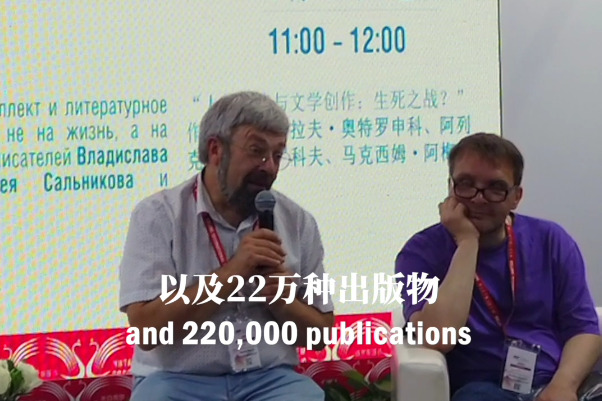Trends transforming publishers' outlook in 2021


As information technology and artificial intelligence advance, human society and civilization have come to a brand-new era.
The publishing industry has also entered a brand-new era, said Zhang Li, vice-director of the Chinese Academy of Press and Publication, in a speech about the digital transformation of the publishing industry in China that he delivered recently at Beijing International Publishing Forum.
"In whichever society, the publishing industry is facing the same conflicts, opportunities and difficulties," he said.
In human history, every upgrade of civilization was always been accompanied by the revolution in the publishing industry, and today's digitalization exerts all-around influence on the publishing industry, he said.
Publications have turned virtual from physical. Publishing vehicles have turned to screen from paper. The consumption of publications has changed from reading to listening and watching. The production and distribution of publications have also shifted from professional organizations to "we-media" individuals, Zhang summarized.
As a result, the traditional publishing industry in China is exploring the way to integrated development and the transformation into providers of knowledge services.
For Zhang, with the help of AI technology in future, the publishing industry will provide knowledge services in two respects-the retrieval services and online platform building, which provide products that go far beyond books.
Knowledge will no longer be simply packed as products, but become the service provider itself that keeps upgrading, Zhang said.
For instance, a robot doctor can provide services to patients without the participation of humans, and today navigation services have completely replaced human navigators, he said.
Yang Jin, deputy editor-in-chief of People's Medical Publishing House, said the medical publisher is also upgrading to achieve the country's goal to build a healthy China, deal with population aging and nurture medical talents.
In addition to traditional publications like medical textbooks, the publishing house is also working on digital projects, including building the platforms for digital medical publications and international medical information, the digital platforms of medical education and the medical encyclopedic database.
The publishing house has a history stretching back 68 years, and on this foundation, it created the first set of digital medical textbooks of international standard in 2014.
In 2013, it established the first MOOC (online education platform) association for medical education in the world. It will further build the big data of medicine and medical AI, and ultimately the internet of things.
Last year, due to the COVID-19 pandemic, students could not go to school, so the online platforms of the publishing house offered 561 digital textbooks, meeting the need of the compulsory courses of various medical disciplines for 6 million students from universities, higher vocational schools, secondary vocational schools, and those continuing education.
The massive open online courses (MOOC) platform of the publishing house has offered more than 200 options for five majors, clinical medicine, nursing and pharmacy included.
The publishing house has also created an integrated textbook platform, through which print textbooks can be used together with digital materials. Users can use smart phones to scan the QR code on the back cover of the textbooks and access the videos, pictures, audios, and medical cases online.
Besides, the publishing house's official account on WeChat posts articles about health that can reach more than 1.3 million users.
The new technology's influence on the publishing industry does not completely rely on the development of technology itself, rather, it more depends on the attitude of the publishing industry toward new technology, said Ao Ran, executive vice-president and secretary-general of China Audio-Video and Digital Publishing Association.
In 2019, the revenue of the digital publishing industry in China hit 988 billion yuan, up over 11 percent than that in 2018. The figure for last year is estimated to surpass 1.1 trillion yuan. The industry includes not only online literature, audio readings, online education, and digital education, but also video games and digital music.
"In the last several decades and a long time into the future, we have and will go through an unprecedented time for creativity and startups," Ao said.
"The publishing industry needs to embrace new technology," he said.





































